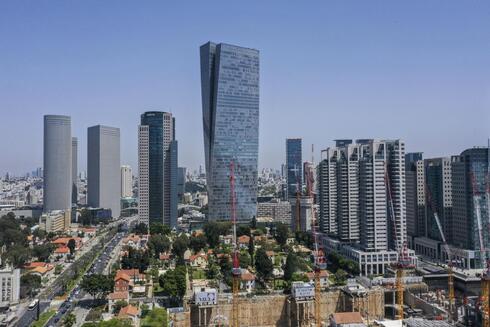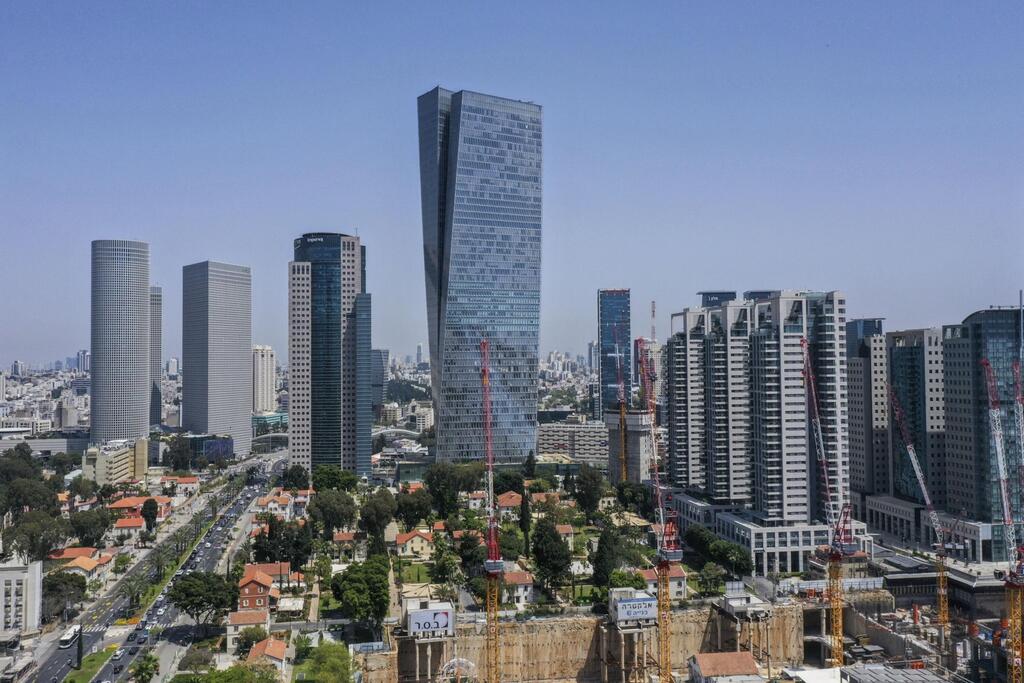
Tel Aviv real estate market hit hardest by tech slowdown
Two recent reports by real estate companies Natam and Inter Israel indicate that the market is correcting downwards with the trend particularly noticeable in the business center of Tel Aviv
The downturn in the local high-tech sector, soaring rental prices, and uncertainty regarding the Israeli economy continue to drive the correction of office rental prices in Israel. Today, in some areas, rental prices are very close to what they were a year and a half ago. Reports from Natam real estate company and Inter Israel, the local partner of Cushman & Wakefield, reveals that some changes in the economy are impacting the sector positively, along with other trends like the opening of the Tel Aviv light rail.
Based on data from both reports, it is evident that areas that experienced the greatest rise in prices after the pandemic are now experiencing significant “corrections.”
Yigal Allon Street saw a decrease from an average price of approximately 160 shekels per square meter to 137 NIS ($36) per square meter, a drop of 14%, in just half a year. On Menachem Begin Road, prices decreased by 7.6% to around 144 NIS ($37) per square meter, and in the area of the stock exchange, prices dropped by approximately 8%, with the current price averaging 110 NIS ($29) per square meter.
As mentioned, both reports attribute the decrease to the previous level of demand experienced and surge in rental prices, with some places exceeding 200 NIS per square meter. Inter Israel’s report addressed the issue of continuous price increases, stating that they "don’t reflect the reality, and today we are seeing a correction happening."
Moving towards operational efficiency
The reports also suggest that large tech companies are downsizing some of their spaces, some of which are offered to sub-tenants, and as the supply increases, the prices immediately go down. It is important to note that leases in the office market tend to be longer and on average last five years. Therefore, in an average office tower, only about 20% of leases open each year and reflect price changes, if any. In addition to large companies, smaller and medium-sized businesses are also not rushing to expand their office spaces, focusing more on operational efficiency and maintaining existing space rather than growing.
According to Natam's report, office rental prices in Tel Aviv are returning to the price range that existed before the outbreak of the coronavirus pandemic. In the second half of 2021, prices in the city surged due to the growth of the high-tech sector and an office space shortage, reaching over 140 NIS ($36) per square meter on average. However, by the end of the first half of 2023, prices had stabilized at nearly 130 NIS ($33.8) per square meter on average.
The downward price trend in some areas of Tel Aviv began in 2022 and continued into the first half of 2023. Nevertheless, some areas in the city have seen little change compared to the second half of 2022. For example, in some neighborhoods prices remained stable at around 78 NIS ($20) per square meter on average, while others saw a small decrease to about 118 NIS ($30) per square meter.
Regarding vacancy rates, Inter Israel's report indicates a sharp increase in empty office spaces in Tel Aviv, rising from only 0.4% in 2022 to 3.2% in 2023. Natam’s report also noted the shortening of lease periods from an average of 5 years to 3 years. The reason for this change is the growth in the sublease market and companies' reluctance to commit to long-term leases due to the economic uncertainty.
Ofer Ben-Zvi Klein, Partner and VP Landlord Services at Natam, commented on the situation in Tel Aviv, saying, "Many companies, especially in the high-tech sector, signed leases for periods of 5 years or more in the post-pandemic period, and property owners are still receiving higher rental fees than the average shown in the report. However, due to the increase in subleased offices, this cannot be ignored. Subleasing offices, which has grown significantly in the past year, is what’s dictating the tone downward, even though the owners of the properties themselves still have higher rents."
Outside of the center of Tel Aviv it’s a completely different story in terms of rental prices. These areas experienced less of a price hike than in the city center, so the subsequent changes there have been less dramatic. The trend in these areas is mainly one of stability with minor increases in specific areas.
The light rail’s influence
In Petah Tikva, the average rental price for offices located near the Red Line of the new light rail has slightly increased to about 75 NIS ($19.5) per square meter. Minor price increases have also been observed in cities like Ra'anana at 74 NIS ($19) per square meter) and Rishon Lezion at 77 NIS ($20) per square meter. In Herzliya, Bnei Brak, Modi'in, and the area surrounding Ben Gurion Airport, prices remain unchanged at 104 NIS ($27), 75 NIS ($19.5), and 73 NIS ($19) per square meter, respectively.
Natam estimates that the trend regarding office spaces in areas outside Tel Aviv is expected to continue. The development and revitalization of many cities, such as Ra'anana, Hod Hasharon, Haifa, Petah Tikva, and Bnei Brak, have added numerous construction rights and new towers. In addition to the opening of the Red Line of the light rail connecting Tel Aviv and Petah Tikva, this has made these areas more attractive. Natam's report anticipates that "improved accessibility to these cities will have a positive impact on population growth and rental fees." Both reports show stable rental prices in Haifa and Jerusalem.















